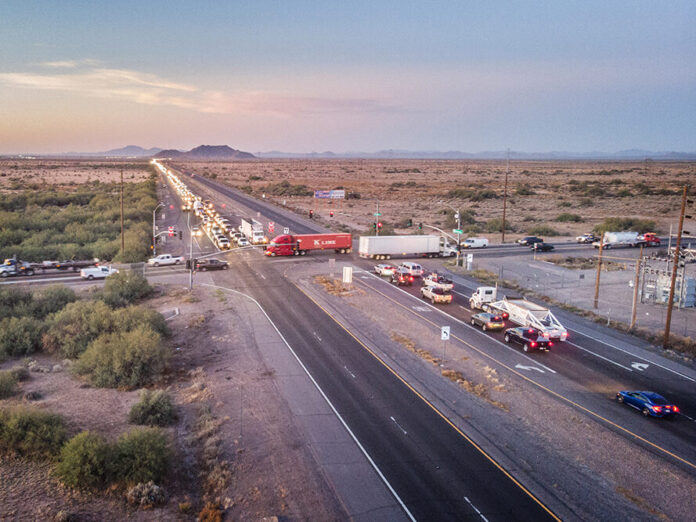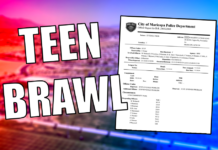The Pinal County Board of Supervisors on Monday voted unanimously to place a new half-percent transportation excise tax on the ballot for the Nov. 7 election.
If approved by voters, the tax will replace a tiered, half-percent tax approved by voters in 2017 but ruled invalid by the Arizona Supreme Court in March. The excise tax was designed to fund transportation projects in the county, but now about $80 million already collected sits in escrow ready to be refunded by the state Department of Revenue.
That tax was the linchpin for funding projects crucial to Maricopa including the widening and improvement of State Route 347 and the under-construction Sonoran Desert Parkway – two primary projects designed to improve ingress and egress from the city.
The new, straight half-percent tax would fund the Regional Transportation Plan also approved by voters in 2017.
The supervisors were voting “to bring back the tax for a vote in a legal form,” County Manager Leo Lew said at the meeting.
Supervisor Jeff Serdy, who called into the meeting, reiterated his desire that the previously collected tax be returned, not to retailers but to the people. He asked for an update from Chris Keller, chief deputy civil county attorney, on the state’s refund process.
But Keller said that, as of early last week, the public is still waiting for forms from the Department of Revenue to seek reimbursement.
A poll conducted in March by Public Opinion Strategies, a national political and public affairs survey research firm, found Pinal County residents overwhelmingly support a new version of the half-cent sales transportation tax.
Glen Bolger, the firm’s partner and co‑founder, told the Pinal Regional Transport Authority that the public is willing to tax itself to fund long-term transportation solutions.
“Pinal County is poised to vote again, by larger than in 2017″ for the new tax,” Bolger said.
The Alexandria, Virginia, firm polled 300 likely Pinal County voters from March 12-15. The poll had a margin of error of 5.66%.






![Elena Trails releases home renderings An image of one of 56 elevation renderings submitted to Maricopa's planning department for the Elena Trails subdivison. The developer plans to construct 14 different floor plans, with four elevation styles per plan. [City of Maricopa]](https://www.inmaricopa.com/wp-content/uploads/2024/04/city-041724-elena-trails-rendering-218x150.jpg)

![Affordable apartments planned near ‘Restaurant Row’ A blue square highlights the area of the proposed affordable housing development and "Restaurant Row" sitting south of city hall and the Maricopa Police Department. Preliminary architectural drawings were not yet available. [City of Maricopa]](https://www.inmaricopa.com/wp-content/uploads/2024/04/041724-affordable-housing-project-restaurant-row-218x150.jpg)









